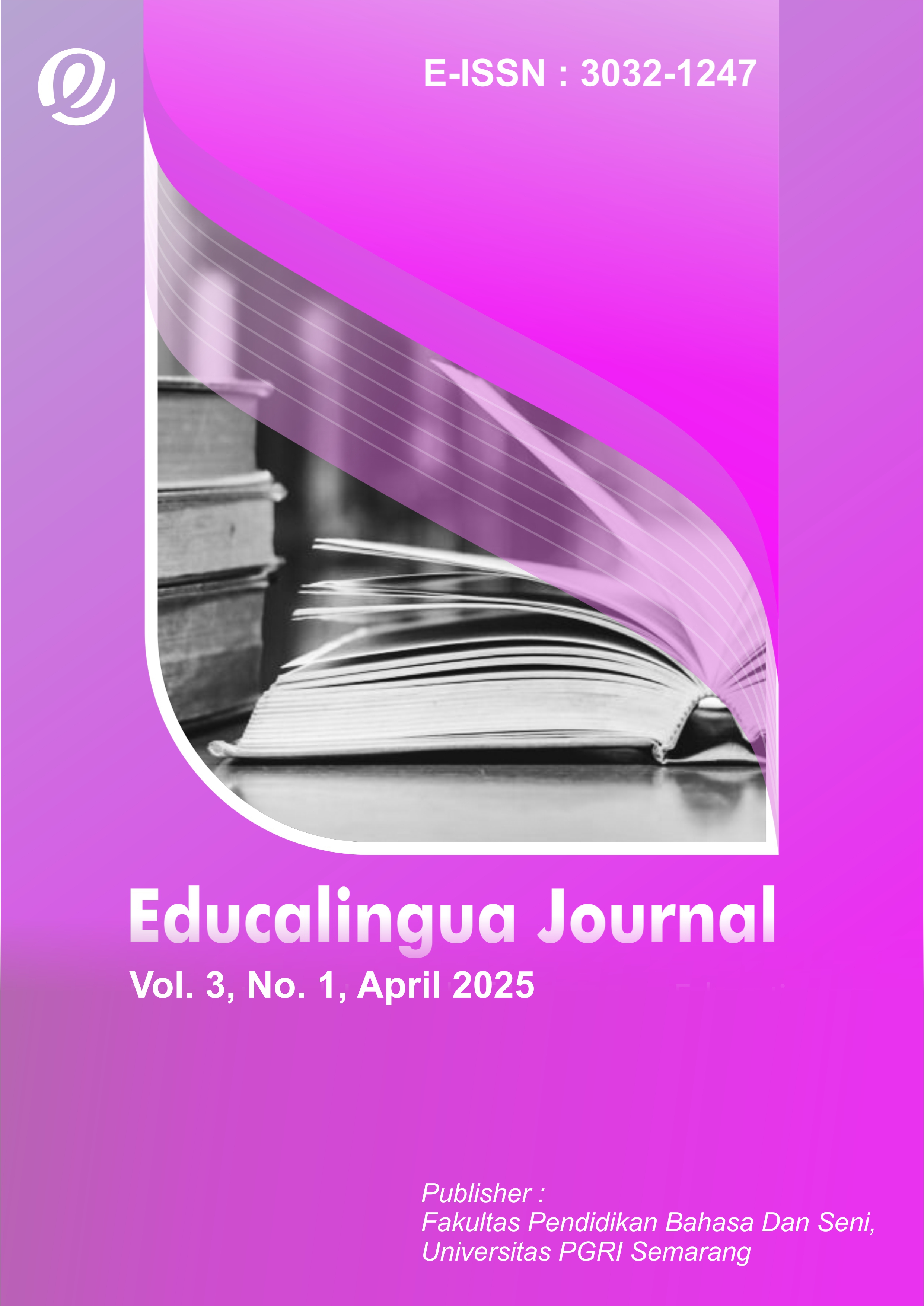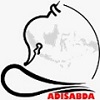Dynamic Assessment Strategies for Enhancing Reading Comprehension and Student Motivation
DOI:
https://doi.org/10.26877/educalingua.v3i1.1673Keywords:
Dynamic Assessment, Reading Comprehension, Reading MotivationAbstract
This study explored the impact of dynamic assessment on students’ reading comprehension and motivation in an Indonesian vocational school. English language teaching in Indonesia faces challenges due to diverse student backgrounds and limited support, which often affects learners' proficiency, especially in reading and speaking. A pre-experimental design was used, involving pre-tests, post-tests, and questionnaires to gather data from 35 students. The data were analyzed using SPSS version 25 and quantitative methods. Results showed a noticeable improvement in students’ reading comprehension scores, increasing from a mean of 82 to 89. Students also reported higher motivation, confidence, and engagement in reading activities. These improvements were linked to the personalized and interactive features of dynamic assessment. The study concludes that dynamic assessment is a promising alternative to traditional assessment methods, as it supports individualized learning and enhances student outcomes in reading comprehension and motivation within vocational education contexts.
References
Abdulaal, M. A. A. D., Alenazi, M. H., Tajuddin, A. J. A., & Hamidi, B. (2022). Dynamic vs. diagnostic assessment: impacts on EFL learners’ speaking fluency and accuracy, learning anxiety, and cognitive load. Language Testing in Asia, 12(1). https://doi.org/10.1186/s40468-022-00179-0
Amini, M. (2015). A Study on the Effect of Dynamic Assessment on EFL Reading Comprehension and Reading Strategy Awareness : Implication for Teaching. Indian Journal of Fundamental and Applied Life Sciences, 5(January 2015), 1313–1319.
Annida, A. I., Slamet, S. Y., & Winarni, R. (2018). the Effect of Directed Reading Thinking Activity (Drta) Learning Strategy and Reading Interest for Reading Comprehension Ability. Social, Humanities, and Educational Studies (SHEs): Conference Series, 1(1), 62–69. https://doi.org/10.20961/shes.v1i1.23454
Brown, H. . (2004). Languange Assesment Principle and Classroom Practices (Second Edition). Pearson Education.
Digna, D., Minsih, & Widyasari., C. (2023). Teachers’ Perceptions of Differentiated Learning in Merdeka Curriculum in Elementary Schools. International Journal of Elementary Education, 7(2), `. ejournal.undiksha.ac.id/index.php/IJEE/article/view/54770
Estrada-Araoz, E. G., Sayed, B. T., Niyazova, G. G., & Lami, D. (2023). Comparing the effects of computerized formative assessment vs. computerized dynamic assessment on developing EFL learners’ reading motivation, reading self-concept, autonomy, and self-regulation. In Language Testing in Asia (Vol. 13, Issue 1). https://doi.org/10.1186/s40468-023-00253-1
Faiz, A., Parhan, M., & Ananda, R. (2022). Paradigma Baru dalam Kurikulum Prototipe. EDUKATIF : JURNAL ILMU PENDIDIKAN, 4(1). https://doi.org/10.31004/edukatif.v4i1.2410
Fitriyah, I., & Jannah, M. (2021). Online Assessment Effect in EFL Classroom: An Investigation on Students and Teachers’ Perceptions. IJELTAL (Indonesian Journal of English Language Teaching and Applied Linguistics), 5(2). https://doi.org/10.21093/ijeltal.v5i2.709
Jalaluddin, & Jazadi, I. (2020). Indonesian Learner Cultural Characteristics and Perception toward Western Culture. Educatio, 15(1), 1–11. https://doi.org/10.29408/edc.v15i1.2230
Kasman, & Lubis, S. K. (2022). Teachers’ Performance Evaluation Instrument Designs in the Implementation of the New Learning Paradigm of the Merdeka Curriculum. Jurnal Kependidikan: Jurnal Hasil Penelitian Dan Kajian Kepustakaan Di Bidang Pendidikan, Pengajaran Dan Pembelajaran, 8(3), 760–775.
Kazemi, A., Bagheri, M., & Rassaei, E. (2021). Impact of Interventionist Dynamic Assessment on Iranian EFL Learners’ L2 Reading Comprehension and Classroom Engagement. International Journal of Foreign Language Teaching and Research, 9(39), 67–79. https://doi.org/10.52547/jfl.9.39.67
Kazemi, A., Bagheri, M. S., & Rassaei, E. (2020). Dynamic assessment in English classrooms: Fostering learners’ reading comprehension and motivation. Cogent Psychology, 7(1). https://doi.org/10.1080/23311908.2020.1788912
Khasawneh, M. A. S., & Al-Rub, M. O. A. (2020). Development of reading comprehension skills among the students of learning disabilities. Universal Journal of Educational Research, 8(11), 5335–5341. https://doi.org/10.13189/ujer.2020.081135
Kuşdemir, Y., & Bulut, P. (2018). The Relationship between Elementary School Students’ Reading Comprehension and Reading Motivation. Journal of Education and Training Studies, 6(12), 97. https://doi.org/10.11114/jets.v6i12.3595
Mohammadi, S., & Babaii, E. (2022). The Dynamic Assessment of Reading Comprehension : An Exploration of EFL Teachers ’ Perception and Practice. Journal of Modern Research in English Language Studies, 9, 123–148. https://doi.org/10.30479/jmrels.2020.12998.1607
Mohammadian, A., Saed, A., & Shahi, Y. (2018). The Effect of Using Video Technology on Improving Reading Comprehension of Iranian Intermediate EFL Learners. Advances in Language and Literary Studies, 9(2), 17. https://doi.org/10.7575/aiac.alls.v.9n.2p.17
Nuraini, F. I., Sodiq, J., & Prastikawati, E. F. (2025). Edmodo as Technology-Based Formative Assessment : How it Enhances Reading Comprehension. 5(1), 81–92. https://doi.org/https://doi.org/10.26877/ijre.v5i1.1368
Prastikawati, E. F., & Adeoye, M. A. (2024). Enhancing Learning : Peer Assessment ’ s Influence on English as a Foreign Language Education in Indonesia. 29(2), 246–253.
Prastikawati, E. F., Mujiyanto, J., Saleh, M., & Fitriati, S. W. (2024). SURVEYING PRE- SERVICE EFL TEACHERS ’ CONCEPTIONS OF ASSESSMENT : IMPLICATION FOR TEACHER EDUCATION. Vol. 6((2024)).
Rahayu, W., Prastikawati, E. F., Wiyaka, & Lestari, M. Y. W. (2022). Fostering Students’ Reading Comprehension through Dynamic Assessment. Journal of Language and Literature, 17(1), 205–214.
Rodriguez‐barrios, E. U., Melendez‐armenta, R. A., Garcia‐aburto, S. G., Lavoignet‐ruiz, M., Sandoval‐herazo, L. C., Molina‐navarro, A., & Morales‐rosales, L. A. (2021). Bayesian approach to analyze reading comprehension: A case study in elementary school children in Mexico. Sustainability (Switzerland), 13(8). https://doi.org/10.3390/su13084285
Sana’ati, M. K., Khonamri, F., Azizi, M., & Molana, K. (2019). Dynamic Assessment in Developing EFL Learners’ Depth of Vocabulary Knowledge through Critical Reading (Pentaksiran Dinamik dalam Membangunkan Kedalaman Kosa Kata Pelajar Bahasa Kedua melalui Pembacaan Kritikal). Jurnal Pendidikan Malaysia, 44(02), 20–29. https://doi.org/10.17576/jpen-2019-44.02-03
Sopiansyah, D., & Masruroh, S. (2021). Konsep dan Implementasi Kurikulum MBKM (Merdeka Belajar Kampus Merdeka). Reslaj : Religion Education Social Laa Roiba Journal, 4(1). https://doi.org/10.47467/reslaj.v4i1.458
Sugiyono. (2018). Metode penelitian kuantitatif / Prof. Dr. Sugiyono (Cet. 1). Alfabeta.
Suherman, A. (2020). The Effects of Dynamic Assessment on Reading Skill Performance: A Study of Indonesian EFL Learners. Metathesis: Journal of English Language, Literature, and Teaching, 4(2), 151. https://doi.org/10.31002/metathesis.v4i2.2266
Suryanto. (2014). Issues in teaching English in a cultural context: A case of Indonesia. The Journal of English Literacy Education: The Teaching and Learning of English as a Foreign Language, 1(2), 75–82. https://ejournal.unsri.ac.id/index.php/jenglish/article/view/2075
Wigfield, A., & Guthrie, J. T. (1997). Relations of Children’s Motivation for Reading to the Amount and Breadth of Their Reading. Journal of Educational Psychology, 89(3). https://doi.org/10.1037/0022-0663.89.3.420
Wiyaka, Prastikawati, E. F., & Adi, A. P. K. (2020). Backchannel as an Online HOTS-Based Formative Assessment to Improve Students’ Reading Skills. 417(Icesre 2019), 95–100. https://doi.org/10.2991/assehr.k.200318.018
Yam, J. H., & Taufik, R. (2021). Hipotesis Penelitian Kuantitatif. Perspektif : Jurnal Ilmu Administrasi, 3(2), 96–102. https://doi.org/10.33592/perspektif.v3i2.1540
Yulia, Y. (2013). Teaching challenges in Indonesia: Motivating students and teachers’ classroom language. Indonesian Journal of Applied Linguistics, 3(1), 1–16. https://doi.org/10.17509/ijal.v3i1.186
Yulianto, H. (2022). An Implementation of Learning Assessment Model on The Curriculum of Merdeka Belajar. Technical and Vocational Edication International Journal, 2(2), 22–34. https://doi.org/10.556442/taveij.v2i2





